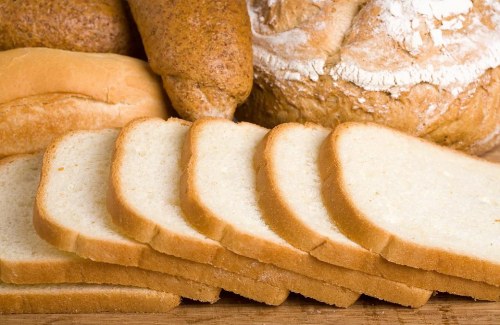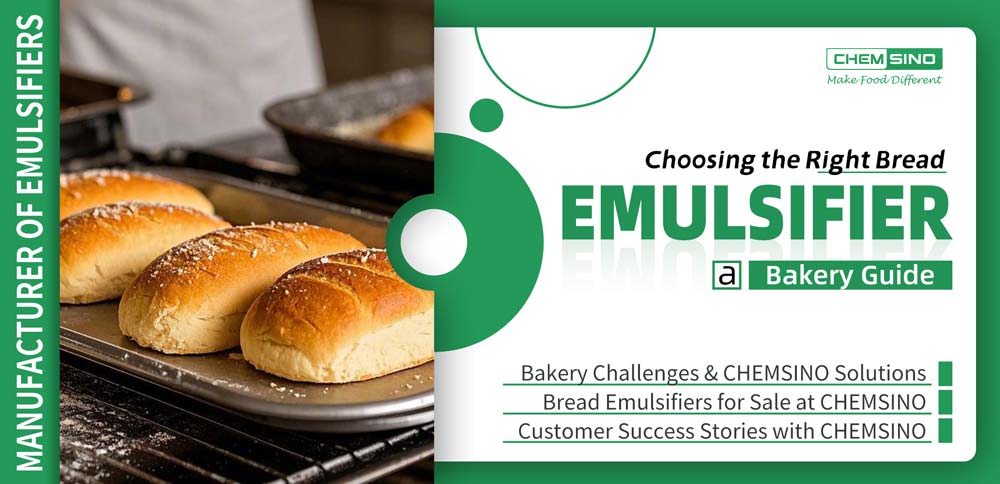Distilled Monoglycerides (DMG) are essential emulsifiers with diverse applications in food and non-food industries. Created through advanced molecular distillation, DMG emulsifiers enhance texture, stability, and shelf life in various products. In this blog, we'll dive into the multifaceted uses of DMG and the regulatory frameworks that ensure their safe application.
What is Distilled Monoglycerides e471?
Distilled Monoglycerides (DMG) is a type of emulsifier derived from the esterification of glycerol with fatty acids. They are produced through a purification process known as distillation, which removes impurities and other fatty acids, resulting in a high-purity product.
Monoglycerides consist of a single fatty acid chain attached to a glycerol molecule. Typically, DMG are composed of about 90% monoglycerides, with the remainder made up of free fatty acids and a minor amount of diglycerides. The distinctive chemical structure of DMG imparts unique properties that make them valuable across various applications.
DMG emulsifiers are widely used in the food industry to stabilize emulsions, enhance texture, and extend the shelf life of various products. They are also used in non-food applications such as cosmetics and pharmaceuticals due to their emulsifying and stabilizing properties.
Uses and Dosage of Distilled Monoglyceride
Distilled Monoglyceride in Food
1.Distilled Monoglyceride in Confectionery Products(Candies, Chocolates, Chewing Gum)
Functions: Oil-proofing, shape retention, gloss enhancement, crystallization inhibition, viscosity reduction, and improvement of texture and softness.
Recommended Dosage:
Candies and chocolates: 1.5-2.0% of the total fat content.
Chewing gum base: 0.30-0.50% of the total gum base.
2. Distilled Monoglyceride in Ice Cream
Functions:
●Emulsification: Ensures fat globules are in a finely dispersed emulsion, stabilizing them.
●Dispersion: Distributes and stabilizes particles outside the fat globules.
●Foaming: Enhances the foaming capacity of the mix during freezing and refines bubble size for better stability.
●Shape Retention: Improves heat resistance of ice cream at room temperature.
●Storage Stability: Reduces changes in the product during storage.
●Ice Crystal Control: Prevents and controls the formation of large ice crystals, resulting in a smoother texture.
Recommended Dosage: 0.15-0.40% of the total material.
.jpg)
3. Distilled Monoglyceride in Dairy Products/Beverages
Functions:
●Emulsification: Enhances the stability of oils in beverages.
●Dispersion and Moistening: Improves the dispersibility of ingredients in drinks such as chocolate.
●Foaming: Contributes to a desirable texture with a high volume of fine bubbles.
●Solubility Assistance: Aids in dissolving oil-soluble vitamins in beverages.
●Antibacterial: Exhibits antibacterial properties against thermophilic Bacillus and Clostridium sporogenes.
Recommended Dosage:
Protein Drinks: 0.05-0.50% of the total material.
Reconstituted Milk: 0.10-0.30% of the total material.
4. Distilled Monoglyceride in Baked Goods/Noodle Products/Snack Foods
Functions:
●Controlling Crystallization: Helps manage and improve the crystallization of fats, enhancing texture.
●Reducing Surface Tension: Increases compatibility between food components and lowers interfacial tension.
●Complexing with Starch: Forms better crumb structure, increases product volume, prevents staling, and extends freshness.
●Complexing with Proteins and Fats: Enhances food structure and rheological properties, strengthening dough.
●Emulsifying: Aids in foaming and stabilizing foam, improving bubble structure.
Recommended Dosages:
Bread: 0.3-0.8% of flour; improves crumb structure, delays hardening, and extends shelf life.
Cake: 3-10% of fat; enhances volume, texture, and shelf life.
Cookies: 1.5-2% of fat; improves handling, increases crispiness, prevents oil leakage, and eases mold release.
Instant Noodles: 0.1-0.2% of flour; enhances handling, reduces oil absorption, and minimizes cooking loss.
Noodles and Pasta: 0.1-0.2% of flour; improves handling and reduces cooking loss.
Extruded Snacks: 0.1-0.2% of flour; improves handling, increases expansion rate, and ensures uniform pore structure, delaying hardening.

5.Distilled Monoglyceride in Edible Fats and Oils(Margarine, Shortening, Mayonnaise, Salad Dressings, Oyster Sauce, etc.)
Functions: Acts as an emulsifier and stabilizer, adjusting fat crystallization, preventing oil-water separation and layering, and improving product quality.
Recommended Dosage: Typically 0.10-0.25%, depending on the purpose.
Non-Food Uses of Distilled Monoglycerides
1. Distilled Monoglyceride in Cosmetics and Personal Care Products
DMG emulsifier is found in skin creams, lotions, makeup, hair conditioners, and other personal care items. In cosmetics, Distilled Monoglyceride serves as an emulsifier, stabilizing blends of oil and water to create smooth and consistent creams, lotions, and other topical products. It also acts as a thickening agent, improving the texture and spreadability of these products.
2. Distilled Monoglyceride in Plastics and Polymers
Distilled Monoglyceride can be used in the manufacturing of films, sheets, and molded plastic products. DMG acts as a lubricant and anti-static agent in plastic processing. It helps to reduce friction between polymer chains, improving the flow properties of the material during extrusion and molding processes. Additionally, it prevents the build-up of static electricity in plastic products, which can attract dust and other particles.
3. Distilled Monoglyceride in Pharmaceuticals
Distilled Monoglyceride is also employed in creams, ointments, and oral dosage forms like tablets and capsules. DMG is used as an emulsifier and stabilizer in pharmaceutical formulations. It helps in the formation of stable emulsions and suspensions, ensuring consistent delivery of active ingredients. DMG e471 can also be used as a coating agent for tablets to improve their stability and control the release of the active ingredient.

Regulatory Guidelines and Approval
Distilled Monoglyceride (DMG) is a frequently used food additive, subject to regulation by different authorities worldwide. In the United States, the Food and Drug Administration (FDA) regulates its use, whereas in the European Union, the European Food Safety Authority (EFSA) provides oversight.
These regulatory bodies enforce stringent limits on the amount of DMG allowed in food products to ensure they are safe for consumption. This regulation helps maintain consumer confidence in the safety and quality of the food they eat.
Ultimately, while it’s important to be mindful of the amount of DMG used, it is generally regarded as safe, particularly for its role in enhancing the texture and prolonging the shelf life of baked goods. As with all food additives, it’s important to use DMG emulsifier appropriately and consider any potential allergens or intolerances.
Conclusion
To conclude, distilled monoglycerides offer crucial benefits as emulsifiers and stabilizers across a range of products. Their regulated use ensures safety and quality, making them a valuable component in enhancing both food and non-food items. Understanding their functions and adhering to guidelines helps maximize their effectiveness while maintaining consumer trust. For more insights on DMG emulsifiers, don't hesitate to get in touch—CHEMSINO company is happy to provide comprehensive info and free sample offerings.





.jpg)





